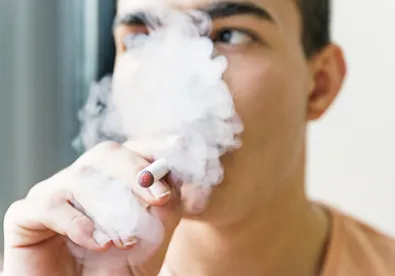As Halloween approaches, the vaping industry faces a ghoulish time. Currently, Massachusetts, Connecticut, Michigan, New York, Rhode Island, Oregon and the city of San Francisco have issued flavor bans on vaping products, mostly with executive orders allegedly to protect teens. Business owners impacted by the use of these executive powers move to courtrooms hoping for a forum, other than the court of public opinion, to present their side of the story before their businesses and adult choices are vaporized.
While the motive cited for the draconian use of executive powers against the vaping industry is the “protection of teens,” an examination of the real risks to teens suggests there could be another motive or prejudice involved. For example, Michigan Governor Gretchen Whitmer’s ban on flavored vaping products by use of Emergency Order recently was blocked by Michigan Judge Cynthia Stephens, who did not consider the ban to be a true emergency since the State had possession of the data used to support the argument of a “teen crisis” and an emergency for a year or more before imposing the ban.
In contrast, Judge Stephens found that the Michigan vaping businesses that filed the lawsuit would lose their businesses and associated goodwill if the ban were enforced. The Court also found that neither of the businesses bringing the lawsuit had sold to minors and that their adult customers overwhelmingly used flavored nicotine products, which were being purchased from out-of-state vendors. Further evidence was presented that if flavored vaping products were prohibited, adults would return to using more harmful combustible tobacco products such as cigarettes. The State vowed to appeal because of the “urgent public health matter” to protect the children of Michigan. But what are the real risks to the children of Michigan?
According to the Centers for Disease Control and Prevention (CDC) Youth Risk Behavior Surveillance System (YRBSS), the children of Michigan are indeed at risk − just not from vaping. In the latest data published by the CDC for High School Youth in Michigan, only 14.8% of all High School Youth in Michigan used a vapor product on at least one day during the past 30 days before the survey. When asked if they currently used electronic vapor products on 20 or more days in the past 30 days before the survey, the percentage plummeted to 3.9%; and the percentage of those using electronic vapor products on all 30 days during the 30 days before the survey was an even lower 2.9%. These numbers hardly equate to evidence of teen addiction or an emergency public health matter that justifies banning all flavors, thereby depriving adults of an alternative to harmful combustible tobacco products. Rather, as Judge Stephens stated, “this is an area that could very well benefit from rulemaking.” A reasoned approach of cooperation is needed wherein the businesses work with government to create more restrictions for teens while preserving choices for adults.
What should be concerning are the other very serious risks faced by the High School Youth in Michigan in much higher percentages:
-
29.6% currently drink alcohol and 13.2% reported binge drinking.
-
15.1% rode with a driver who had been drinking alcohol.
-
23.7% reported currently using marijuana.
-
26% were offered, sold, or given an illegal drug on school property.
-
39.4% texted or e-mailed while driving a car, which is a known distraction directly related to auto accidents.
-
17.5% carried a weapon and 4.1% of these teens carried that weapon on school property, which probably explains why 8.2% did not feel safe at school or on their way to or from school.
-
22.8% were bullied on school property.
-
Tragically, 14.3% of the female teens reported they were physically forced to have sexual intercourse and 17.1% reported experiencing sexual violence.
We all can agree that Michigan teens face risks − but not from vaping. Perhaps the resources of Michigan could be focused on the other, more prevalent teen risks rather than on Emergency Orders resulting in the loss of Michigan businesses and adult choices.



 />i
/>i
